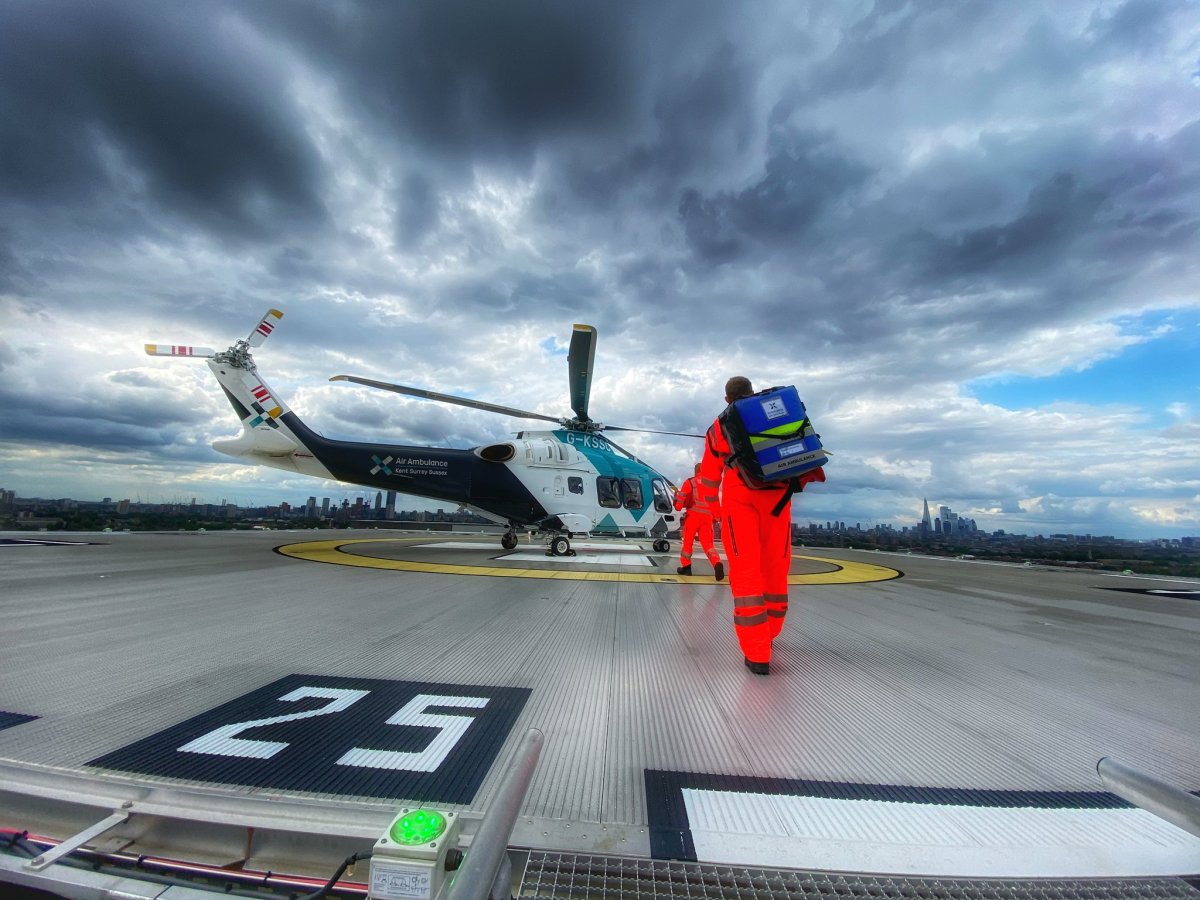Let’s chat about a topic that can often be overlooked amidst the chaos of a medical emergency: insurance coverage and how it impacts air ambulance billing. It’s a crucial aspect to consider, especially when grappling with the overwhelming stress of a loved one’s health crisis. In this article, we’ll unravel the complexities of insurance coverage for air ambulance services, highlighting its effects on the often hefty bills that come with such life-saving transportation. So, grab a cup of coffee, get comfy, and let’s delve into the world of air ambulance billing and insurance coverage.
Understanding Air Ambulance Services
What are air ambulance services?
Air ambulance services refer to the transportation of patients in need of emergency medical care via helicopter or fixed-wing aircraft. These services are equipped with medical personnel, including doctors, nurses, and paramedics, who are trained to provide critical care during the flight. Air ambulance services are typically used when the patient’s condition is too severe for ground transportation or when time is of the essence.
Why are air ambulance services needed?
Air ambulance services are needed for several reasons. Firstly, they provide rapid transportation for patients in critical condition who require immediate medical intervention. In situations where ground transportation would take too long, air ambulances can significantly reduce travel time, increasing the chances of survival for the patient. Additionally, air ambulances can access remote or inaccessible areas, such as rural locations or disaster-stricken regions, where traditional transportation methods may be limited or unavailable.
How are air ambulance services different from other forms of transportation?
Air ambulance services differ from other forms of transportation, such as ground ambulances or personal vehicles, in several ways. The primary difference lies in their ability to provide critical care during transportation. Air ambulance crews are trained to stabilize patients, administer medication, and provide advanced life support in-flight. These services are equipped with state-of-the-art medical equipment, including ventilators, cardiac monitors, and defibrillators, which enable them to provide high-level medical care while in transit. Additionally, air ambulances have the advantage of speed, allowing them to reach distant or remote locations quickly.
The Impact of Insurance Coverage
How insurance coverage affects air ambulance billing
Insurance coverage plays a significant role in air ambulance billing. The cost of air ambulance services can be substantial, often ranging from thousands to tens of thousands of dollars per flight. Insurance coverage determines how much of this cost will be covered by the patient’s insurance provider. Depending on the insurance plan, coverage can vary widely, potentially leaving patients with substantial out-of-pocket expenses. It is crucial for individuals to understand their insurance coverage and any limitations or restrictions it may impose on air ambulance services.
Common types of insurance coverage for air ambulance services
There are several types of insurance coverage that may apply to air ambulance services. These include private health insurance plans, government programs such as Medicare and Medicaid, and specialized travel insurance. Private health insurance plans may provide coverage for air ambulance services but may vary in the extent of coverage based on individual policies. Medicare and Medicaid coverage may be available for eligible individuals, although certain conditions and limitations apply. Specialized travel insurance may provide coverage for emergency medical transportation while traveling abroad. It is important to review the specific provisions of insurance policies to determine the extent of coverage for air ambulance services.

Insurance Policies and Limitations
Different insurance policies and their limitations
Insurance policies may vary in their coverage and limitations for air ambulance services. Some policies may have specific provisions that limit coverage to certain types of emergency medical situations or geographical areas. For example, coverage may only apply if the patient’s condition requires immediate and necessary medical intervention that is not available locally. Additionally, insurance policies may have specific criteria that must be met, such as pre-authorization or medical necessity requirements, before coverage is approved. It is essential to carefully review the terms and conditions of insurance policies to understand the limitations that may apply to air ambulance services.
Exclusions and restrictions in insurance policies
Insurance policies for air ambulance services may also include exclusions and restrictions that limit coverage. Common exclusions may include non-emergency medical transportation, transportation for scheduled medical procedures, or transportation for medical conditions that are considered non-life-threatening. Restrictions may include limitations on the number of air ambulance trips covered per year, geographical restrictions on coverage, or coverage only for specific air ambulance providers. It is important to be aware of these exclusions and restrictions when evaluating insurance coverage for air ambulance services.
In-Network vs Out-of-Network Providers
What are in-network and out-of-network providers?
In the context of air ambulance services, in-network providers are those that have a contract or agreement with the patient’s insurance plan. These providers have negotiated rates with the insurance company, which often results in lower out-of-pocket costs for the patient. Out-of-network providers, on the other hand, do not have a contract with the insurance plan and may not have negotiated rates. As a result, using an out-of-network air ambulance service can lead to higher costs for the patient.
How insurance coverage differs for in-network and out-of-network air ambulance services
Insurance coverage for in-network and out-of-network air ambulance services can differ significantly. In-network providers typically have pre-negotiated rates with the insurance company, which means the patient’s out-of-pocket costs are usually lower. These providers are often preferred by insurance companies, and their services may be subject to fewer restrictions or limitations. Out-of-network providers, however, may not have pre-negotiated rates, and the patient may be responsible for a greater portion of the cost. It is important to check with the insurance company to determine whether the air ambulance service is in-network or out-of-network to understand the potential impact on coverage and billing.
Preferred Provider Organizations (PPO)
Understanding PPO networks
Preferred Provider Organizations (PPOs) are a type of managed care network that contracts with healthcare providers, including air ambulance services, to provide discounted rates to their members. PPO networks typically have a wide range of participating hospitals and healthcare providers, offering flexibility and choice to the insured individual. PPOs generally offer coverage for both in-network and out-of-network providers, although coverage for out-of-network services may be subject to higher deductibles and co-pays.
Benefits and drawbacks of using a PPO for air ambulance services
Using a PPO network for air ambulance services can have several benefits. Firstly, PPO networks often have pre-negotiated rates with air ambulance providers, resulting in lower out-of-pocket costs for the insured individual. Additionally, PPO networks typically offer a broader range of providers, giving individuals more options when selecting an air ambulance service. However, it is important to note that not all air ambulance providers may participate in a specific PPO network. In such cases, individuals may need to consider using an out-of-network provider, which could result in higher costs.
Health Maintenance Organizations (HMO)
Understanding HMO networks
Health Maintenance Organizations (HMOs) are another type of managed care network that provides comprehensive healthcare coverage to their members. HMOs typically require members to choose a primary care physician (PCP) who manages all aspects of their healthcare. In the context of air ambulance services, individuals under an HMO plan may require pre-authorization from their PCP before utilizing air ambulance transportation. HMOs usually have a limited network of healthcare providers, including air ambulance services, which can impact the choice of providers for air ambulance transportation.
How HMOs impact air ambulance billing
HMOs may impact air ambulance billing through their network restrictions and pre-authorization requirements. As HMOs typically have a limited network of providers, individuals may have fewer options when selecting an air ambulance service. Additionally, HMOs may require pre-authorization from the primary care physician before air ambulance transportation is approved. Failure to obtain pre-authorization may result in denied coverage or increased out-of-pocket expenses. It is important for individuals under an HMO plan to understand the specific requirements and limitations that may apply to air ambulance services.
Exclusive Provider Organizations (EPO)
Understanding EPO networks
Exclusive Provider Organizations (EPOs) are managed care networks that are similar to PPOs but with more stringent restrictions on out-of-network coverage. EPO networks have a specific list of participating providers, including air ambulance services, which individuals must use in order to receive coverage. EPOs do not provide any coverage for services obtained from out-of-network providers, except in cases of emergency or with prior authorization. This means that individuals under an EPO plan must carefully consider their choice of air ambulance service to ensure coverage.
Coverage and limitations of EPOs for air ambulance services
Under an EPO plan, coverage for air ambulance services is typically limited to in-network providers. If an individual chooses to use an out-of-network air ambulance service without prior authorization or in a non-emergency situation, they may be responsible for the full cost of the service. It is crucial for individuals under an EPO plan to understand the network restrictions and the implications of using out-of-network providers for air ambulance transportation.
Point of Service (POS) Plans
What are POS plans?
Point of Service (POS) plans are a type of managed care plan that combines features of both HMO and PPO plans. POS plans allow individuals to have a primary care physician (PCP) who manages their healthcare and provides referrals to specialists within the network. However, individuals also have the option to seek care from providers outside the network, but at a higher cost. POS plans typically require individuals to select a PCP and obtain referrals for specialized care, including air ambulance services.
How POS plans affect air ambulance billing
POS plans can impact air ambulance billing by requiring referrals from the primary care physician. In order for air ambulance services to be covered under a POS plan, individuals may need to obtain a referral from their PCP that justifies the need for emergency transportation. Failure to obtain a referral may result in denied coverage or higher out-of-pocket expenses. It is important for individuals under a POS plan to follow the referral process outlined by their insurance provider to ensure coverage for air ambulance services.
Medicare and Medicaid Coverage
Medicare coverage for air ambulance services
Medicare is a federal health insurance program that provides coverage for certain individuals aged 65 and older, as well as individuals with certain disabilities or end-stage renal disease. Medicare coverage for air ambulance services is available under specific circumstances, such as when the patient requires immediate and necessary medical intervention that is not available locally. However, coverage is subject to certain conditions, including pre-authorization requirements and medical necessity criteria. It is important for individuals with Medicare to understand the specific provisions and limitations that apply to air ambulance coverage.
Medicaid coverage and limitations for air ambulance services
Medicaid is a joint federal and state program that provides health coverage to individuals with low income or disabilities. Medicaid coverage for air ambulance services varies by state and is subject to specific guidelines and limitations. Some states may provide comprehensive coverage for air ambulance services, while others may have more restrictive criteria for coverage. It is crucial for individuals with Medicaid to review the policies and guidelines of their specific state to understand the extent of coverage for air ambulance services.
Conclusion
Understanding the impact of insurance coverage on air ambulance billing is essential for individuals who may require these critical emergency services. The cost of air ambulance transportation can be significant, but insurance coverage can provide valuable financial support. It is important for individuals to familiarize themselves with their insurance policies, including any restrictions, limitations, or requirements that may apply to air ambulance services. By being informed and proactive, individuals can make educated decisions and ensure their insurance coverage adequately supports their needs in emergency medical situations.



